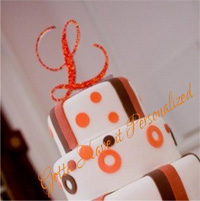One of the most versatile and inspirational wedding themes is the Sparkle Theme, featuring a bride and attendants bedecked in glistening European crystals that catch the light and draw attention to the true stars of the wedding. These beautiful crystals come in an array of breathtaking colors, shapes and sizes that can be used creatively to come up with a winter snowscape or the springtime dew atop flowers or scattered across the reception tables. They can be used to highlight the bridal jewelry, used in hair ornaments, on the bridal and attendant’s gowns and even on the wedding shoes. One of the most popular and spectacular uses of European crystals these days is for the creation of the bouquets.
European crystal bouquets are stunning displays of finely cut, sparkling jewels suspended in a cascade that can beautifully take the place of traditional flowers in a unique, attention-catching way. There are limitless choices available, but a good one is clear crystal for the bridal bouquet, especially if the bride is dressed in white, and colored crystals that match the bridesmaids’ gowns. However, some brides prefer to mix things up a bit and add some color to their own bouquets as well. Half the fun is in selecting which crystals and color combinations to use.
To make a gorgeous European bouquet, select an array of 8 mm, bi-cone and round shaped crystals. Clear AB crystals are refracted in ways that produce a rainbow effect when the light hits them just right. There are perfectly clear crystals available as well. Grab a power drill, a pair of needle nosed pliers, some 26 gauge wire, a sturdy pair of scissors or wire cutters, a screw-in hook to use in the drill, a ruler and some pretty ribbon to write the bouquet stems.
Like crystals, wire comes in many different colors these days, from blues and greens to reds and purples. However, if the wedding is more formal, silver wire is nice, especially for the bridal bouquet. Use the ruler to measure out the desired length of wire for the bouquet in the 14 – 15” range. Each wire will end up being half the chosen size, by the time the wire is bent and twisted. Measure as many lengths as desired. The more wire, the fuller the bouquet will be.
Begin by placing the hook inside the drill and tightly securing it with the drill key. Then, bend a length of wire into an “L” shape. Place a European crystal on the wire and push it to the point where one side of the “L” meets the other. Give the wire a quick twist to secure the crystal in place, close it together so that the two ends touch, and put it into the hook on the drill. Grasp the ends of the wire with the needle nosed piers and use the drill to twist the wire together. This should take about 10 seconds per strand, give or take a second or two. Be sure not to twist it too tight or it can snap. Remove the wire and crystal from the hook and repeat as many times as desired. The typical bridal bouquet will contain about 210 strands and a smaller bridesmaid’s bouquet could contain around 110, but these numbers can be adjusted as desired.
There are no hard-core rules to using this method. For example, it can be adjusted to accommodate more than one crystal per strand, if desired. Once all of the strands have been created, place them all together and bend them in half, or close to half. Again, the lengths can be adjusted as desired. Wrap all of the ends together as one might wrap an extension cord for storage. If any wire ends stick out, trim them neatly with the scissors or wire cutters. Next, wrap the entire handle part with ribbon, working from bottom to top and back down again. Use glue to secure the ribbon, if desired, or tie into attractive knots.
Finally, turn the bouquet upside down and separate the crystal-embellished wires to form the overall shape of the bouquet. The wire has a lot of flexibility and can be formed into a nice half-dome shape. Store in a flower vase before and after the wedding for a beautiful reminder of a bright and shining moment.
Author
Jason Pistiner
Google


